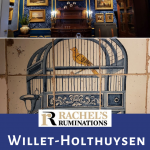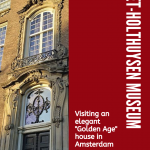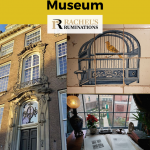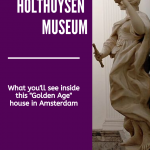The Willet-Holthuysen Museum: An elegant Golden Age house in Amsterdam
Many tourists visiting Amsterdam come to see the beautiful buildings in the old center. The UNESCO site – officially called “the Seventeenth-Century Canal Ring Area of Amsterdam inside the Singelgracht” – is lined with elegant “Golden Age” houses. It’s very picturesque and very Instagrammable. You can see a few of them on the inside: one of those houses is the Willet-Holthuysen Museum.
Disclosure: This article contains affiliate links. If you click on one and make a purchase, I will receive a small commission.
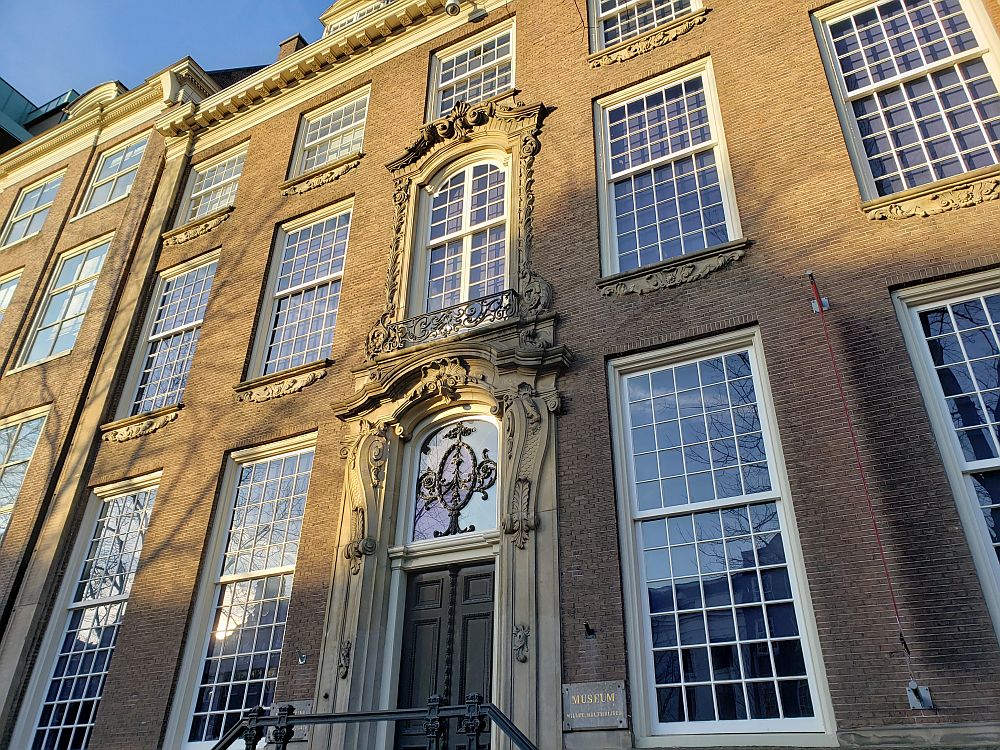
Note added in May 2024: I wrote this article several years ago, and it describes this museum as a way to see an original Amsterdam canal house from the inside. This is still true. Now, though, it is also housing one or more exhibitions for the Amsterdam Museum as well. The Amsterdam Museum is undergoing some extensive renovations, so the exhibitions have moved here and one other location. See my article about the Amsterdam Museum.
A “Golden Age” house in Amsterdam
The Willet-Holthuysen Museum’s building dates to 1687, the late end of the “Golden Age,” when the mayor of Amsterdam, Jacob Hop, lived there. I don’t know if he owned it at the time or the city bought it for the mayor’s residence. I suspect the latter because other mayors lived there after him.
Either way, it was an enormously valuable piece of real estate, with its double-width frontage. Houses were taxed according to width in the 17th century, so building a wide house was a clear sign of wealth.

I put the name “Golden Age” in quotation marks above because the term is falling out of use. The Golden Age was a period of enormous growth and prosperity in Amsterdam: when those canal rings were built and expanded. Yet the “golden” part of it was only for the wealthy merchants. They made their money from shipping and trading in goods from overseas: slaves, for example, and sugar grown on plantations worked by enslaved people.
Not really so golden when you look at it that way.
Some museums – I know of the Amsterdam Museum and the Maritime Museum – have decided to stop using the term. The problem is that a good replacement name for this exceptional period of growth and wealth isn’t easy to find, other than the rather nondescript “17th century.” Hence my reluctant continued use of “Golden Age.” Maybe “the Age of Exploitation” would be more appropriate?
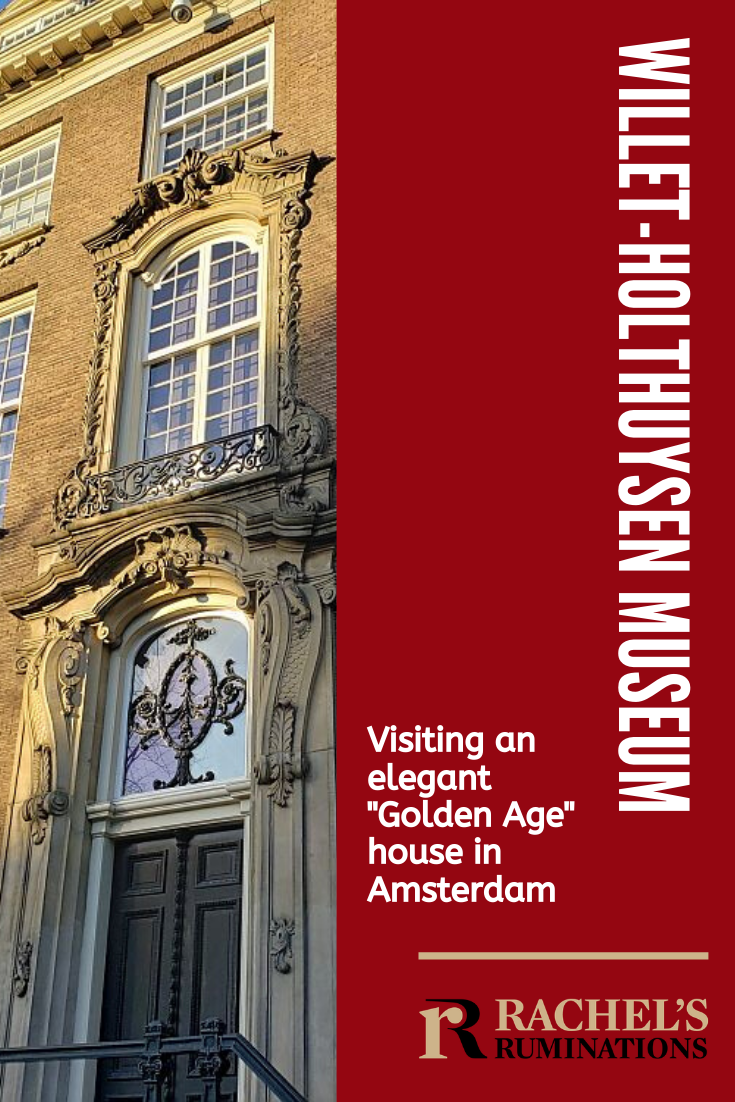
History of the Willet-Holthuysen house
The house passed through many owners over the centuries until Abraham Willet and his wife, Lousa Holthuysen, bought it in 1861. Louisa Holthuysen died a widow in 1895, leaving the house to the city so that it could become a museum.
Like the Van Loon House, another Golden Age house in Amsterdam that you can visit – click the link for my review – the Willet-Holthuysen Museum offers a glimpse of life in the 18th and 19th century.
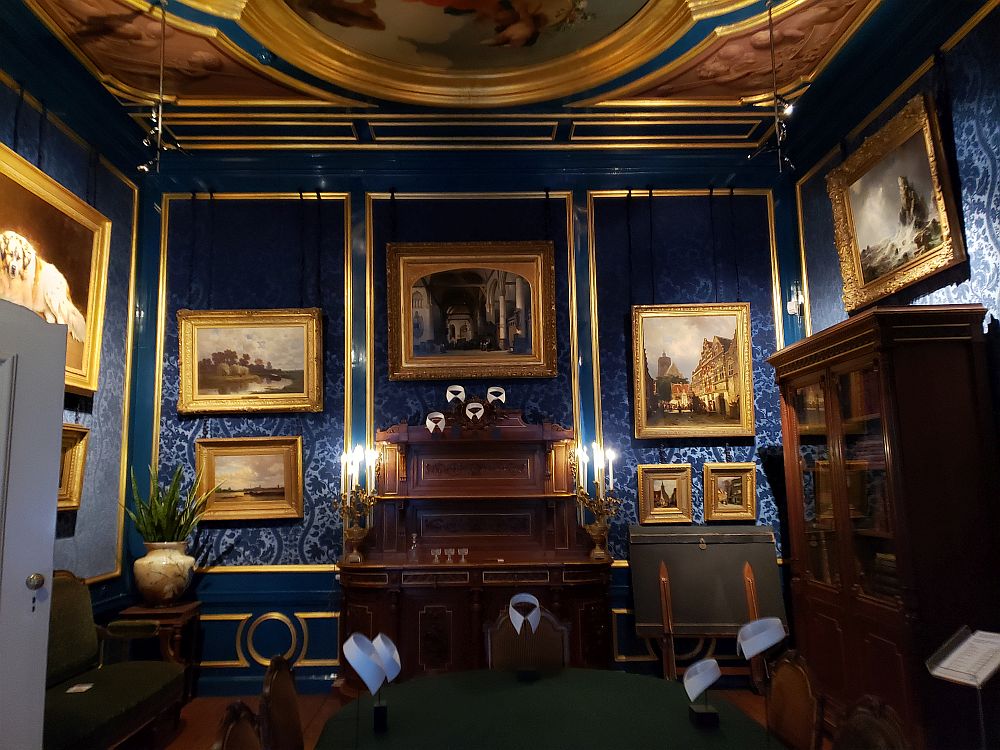
Apparently the visitors of the time when it became a museum – the turn of the 20th century – were only interested in the grandest rooms on the bel-etage, so much of the upstairs above that was emptied and not maintained. Now under the ownership of the Rijksmuseum, the house has been refurnished and brought back to its late-19th-century look.
A tour of the Willet-Holthuysen Museum
Admission to the museum includes an audio tour, which is worth taking for the background information. It’s the kind that you trigger by pointing it at a sign, and you can push additional buttons for more detail. This allows you to view the rooms in whatever order you please. Posted signs offer more information on particular items on display, many placed here from the Rijksmuseum’s collections.
Entering on the ground floor, now mostly used for museum business, you can go straight down the hall after buying your ticket to see a short film about the house’s history and to visit the reconstructed kitchen. All of these “below stairs” rooms would have once been work spaces in the Golden Age.
The bel-etage
The bel-etage, or rather the floor right above the kitchen level, was meant to impress, and it does. People of the 19th century who could afford to live in a Golden Age house in Amsterdam did not cut corners!
The beautiful ballroom upstairs on the bel-etage sets the tone, with its elegant chandelier and wallpaper in Louis XVI style. Apparently, the money that Willet spent decorating it would be, in today’s money, the equivalent of half a million euros.

Most of the rest of the bel-etage continues this effect: the gentlemen’s parlor, the ladies’ salon, and the dining room.
I especially like the dining room: the table is richly set, yet you can imagine a rather intimate small gathering there.
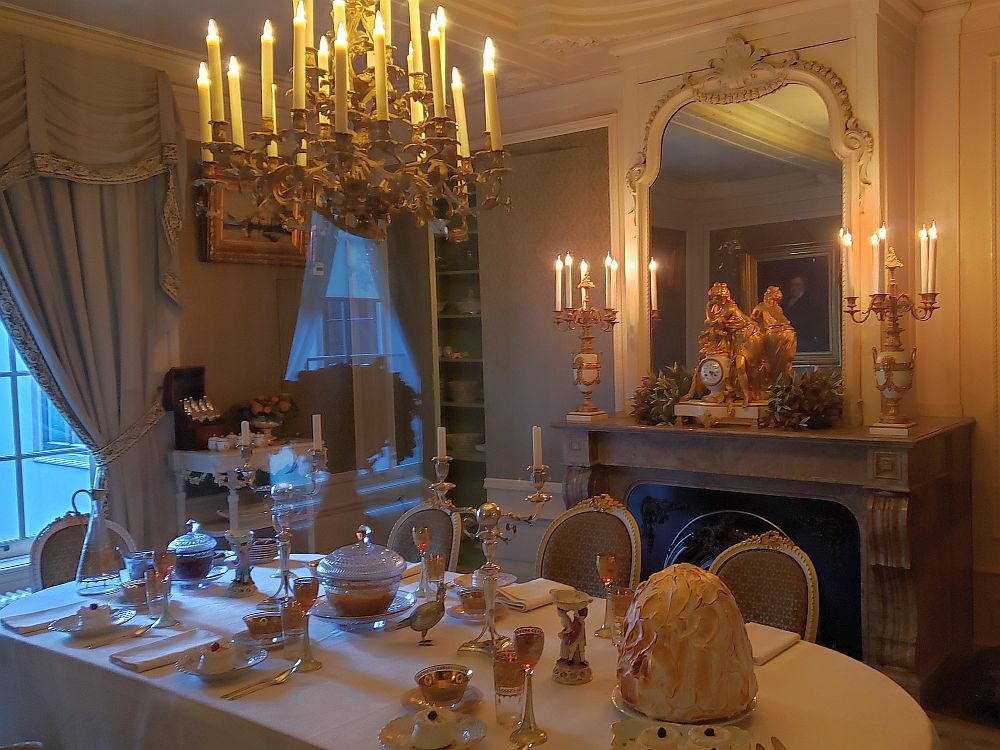
My other favorite room is the koepelkamer (conservatory), a small, eight-sided room on the back of the house with enormously tall windows looking out on the garden. It’s light and bright and would be a pleasant place for a cup of tea.
If you’re planning a visit to Amsterdam, make sure to check out the rest of my articles about Amsterdam museums and other sights.
Also consider whether to buy a GoCity card. If you’re planning to see lots of the sights within a few days, it could save you quite a bit of money.
Upstairs in the Willet-Holthuysen Museum
Upstairs, the bedroom and study are just as grand. Yet, at the same time, it seems like it must have been comfortable as well, when the Willet-Holthuysens weren’t entertaining.
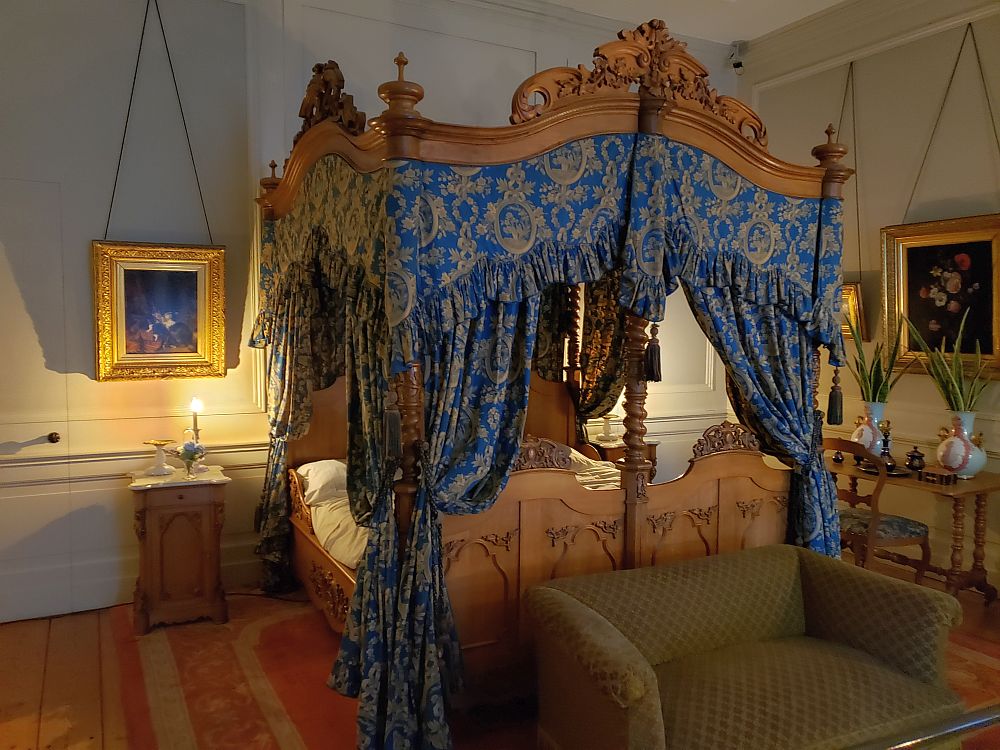
The small, octagonal, collector’s room is an interesting one: Willet used it to show his smaller art objects to friends. (Can you imagine having a separate room just for showing people your valuables?) It’s very different from the rest of the house: in a Renaissance style, with dark furniture, dark red cloth wallpaper, and painted glass windows.
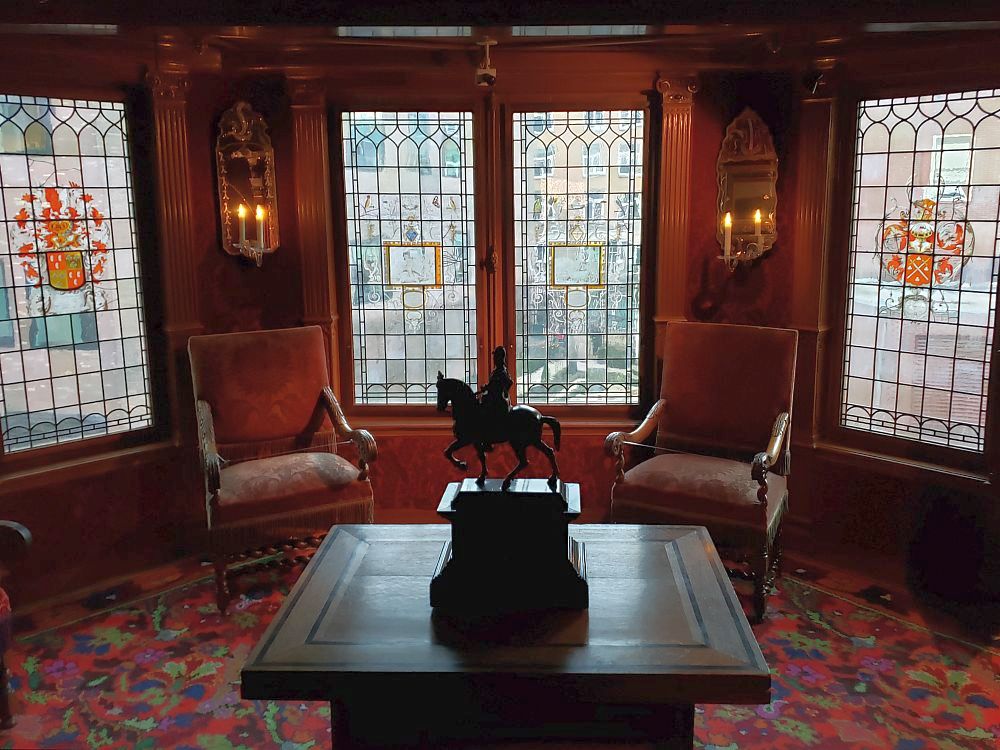
Also check out the over-the-top statues in the stairwell upstairs. The stairwell, by the way, was pretty much the only thing that the Willet-Holthuysens didn’t change when they moved in, so it dates to an earlier conversion in the mid-18th century.
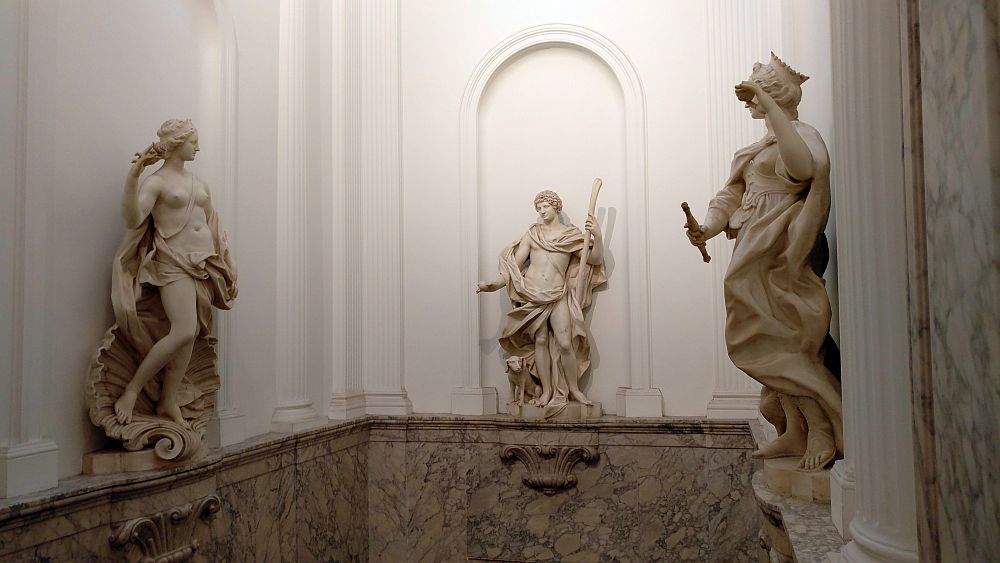
You get a good view of the garden from the study upstairs. It’s extremely formal, redesigned to a French classical style popular in the 17th century. The whole thing is a reconstruction, since the original would have been smaller to accommodate a stable and coach house.
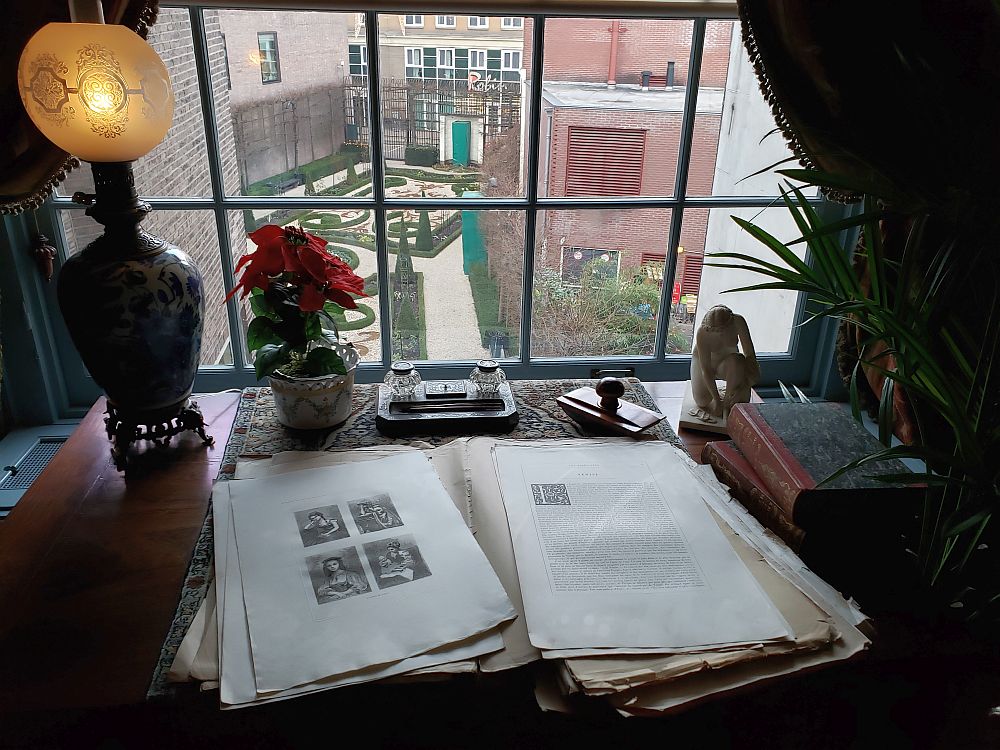
Servants at the Willet-Holthuysen residence
Of course, any elegant Golden Age house in Amsterdam would have amounted to nothing without the servant classes, and the Willet-Holthuysen Museum does give a bit of information about their work. We saw the kitchen, which, reconstructed and quite homey-looking, probably disguises how much work it would have been to keep the family and all their visitors fed, clothed and clean. The occasional bird images on the mostly-plain tiling are particularly charming.
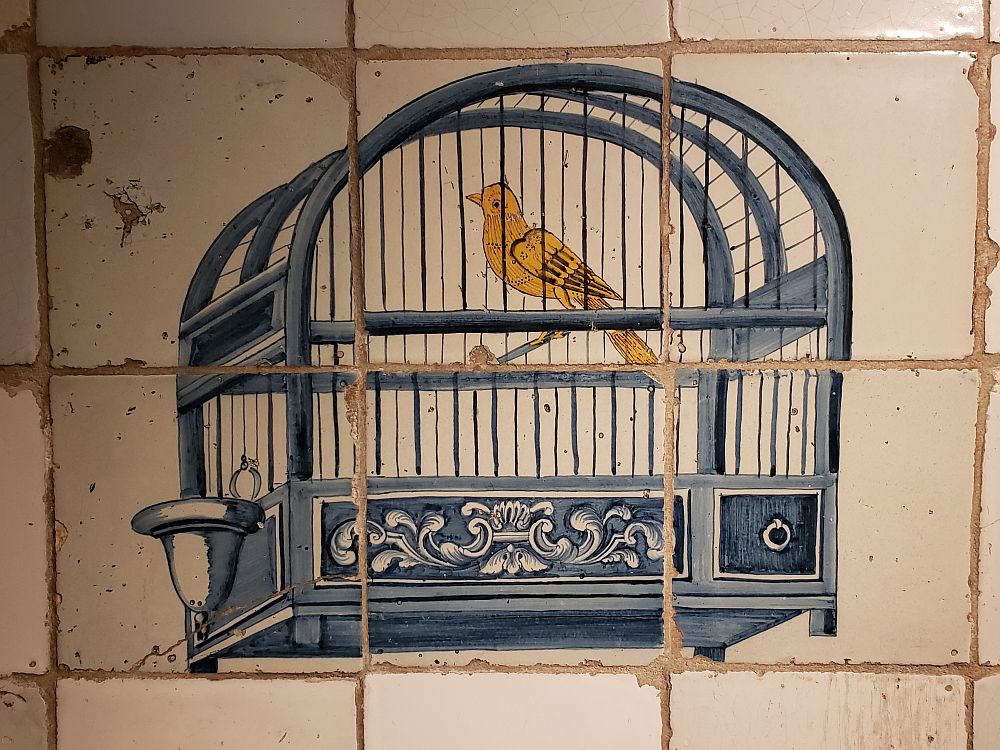
In a sort of in-between floor between the bel-etage and the bedroom floor upstairs, we found the provisiekamer: the pantry. The china that wasn’t used every day, the silverware and other valuables would be locked up in this room, safe from theft. I imagine the servants spent a lot of time there polishing the silver.
Unfortunately, the servants’ quarters further upstairs are not open to the public. I would have liked more insight into their lives.
Use the map below to book your accommodations for your trip to Amsterdam:
Should you visit the Willet-Holthuysen Museum?
Would I recommend this museum? Yes, but I wouldn’t recommend going to both this one and the Van Loon House unless you’re a particular fan of Golden Age houses in Amsterdam. I would certainly, if you want to learn more about the growth of Amsterdam in the Golden Age, combine it with the Grachtenhuis museum (a.k.a. Canal House Museum), which specifically focuses on how the city grew and how the houses were built and used. The Amsterdam Historical Museum would also combine well with this.
Book your ticket to the Willet-Holthuysen Museum ahead of time. It includes an audio tour.
The Willet-Holthuysen Museum: Herengracht 605 between Amstel and Utrechtsestraat. Take the 51, 53 or 54 metro to Waterlooplein or the tram 4 or 14 to Rembrandtplein. Open daily 10:00-17:00. Admission: €12.50; free for children up to and including 17.
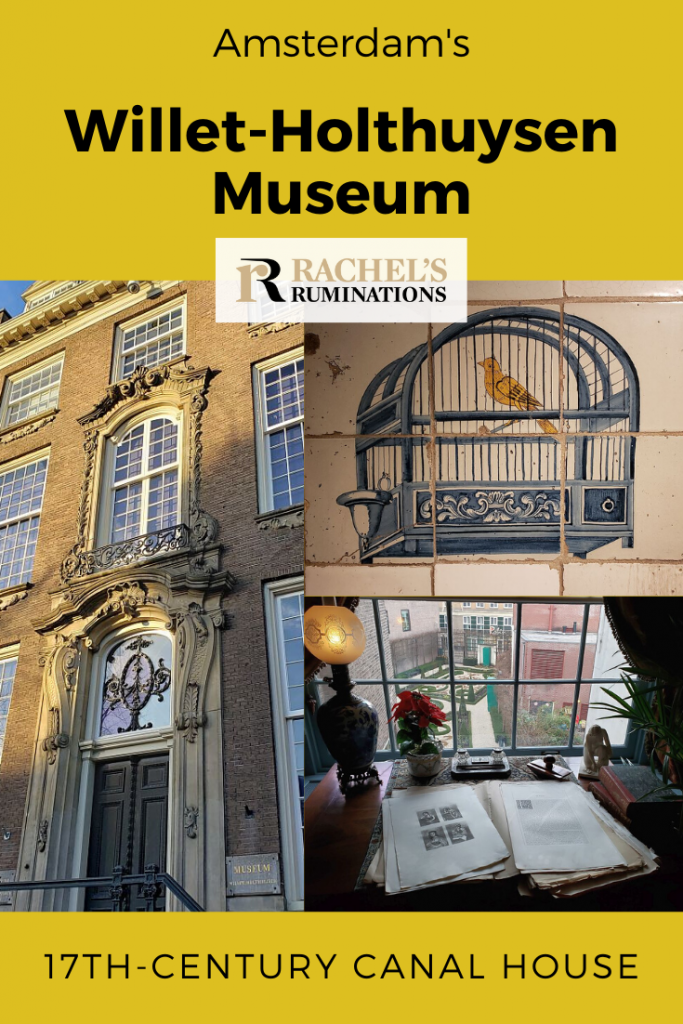
My travel recommendations
Planning travel
- Skyscanner is where I always start my flight searches.
- Booking.com is the company I use most for finding accommodations. If you prefer, Expedia offers more or less the same.
- Discover Cars offers an easy way to compare prices from all of the major car-rental companies in one place.
- Use Viator or GetYourGuide to find walking tours, day tours, airport pickups, city cards, tickets and whatever else you need at your destination.
- Bookmundi is great when you’re looking for a longer tour of a few days to a few weeks, private or with a group, pretty much anywhere in the world. Lots of different tour companies list their tours here, so you can comparison shop.
- GetTransfer is the place to book your airport-to-hotel transfers (and vice-versa). It’s so reassuring to have this all set up and paid for ahead of time, rather than having to make decisions after a long, tiring flight!
- Buy a GoCity Pass when you’re planning to do a lot of sightseeing on a city trip. It can save you a lot on admissions to museums and other attractions in big cities like New York and Amsterdam.
- Ferryhopper is a convenient way to book ferries ahead of time. They cover ferry bookings in 33 different countries at last count.
Other travel-related items
- It’s really awkward to have to rely on WIFI when you travel overseas. I’ve tried several e-sim cards, and GigSky’s e-sim was the one that was easiest to activate and use. You buy it through their app and activate it when you need it. Use the code RACHEL10 to get a 10% discount!
- Another option I just recently tried for the first time is a portable wifi modem by WifiCandy. It supports up to 8 devices and you just carry it along in your pocket or bag! If you’re traveling with a family or group, it might end up cheaper to use than an e-sim. Use the code RACHELSRUMINATIONS for a 10% discount.
- I’m a fan of SCOTTeVEST’s jackets and vests because when I wear one, I don’t have to carry a handbag. I feel like all my stuff is safer when I travel because it’s in inside pockets close to my body.
- I use ExpressVPN on my phone and laptop when I travel. It keeps me safe from hackers when I use public or hotel wifi.


